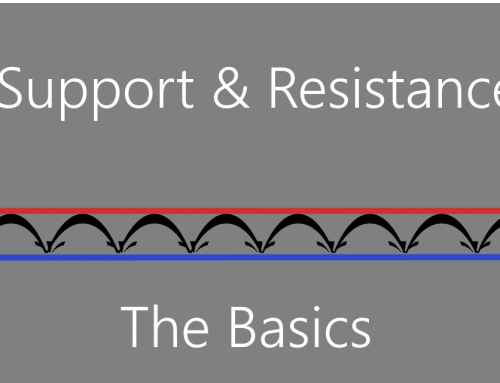Why Do Companies Split Their Stock?
Stock splits don’t actually change the intrinsic value of a stock, but they do often create euphoria among shareholders and potential buyers that can propel a stock’s price sharply higher. Does it make sense that splits can cause such a stir?
A stock split occurs when a company divides a stock’s price by a ratio relative to the number of additional shares being issued – say 2-for-1. Regardless of the ratio, the stock price will decline and the quantity of shares outstanding will increase. It’s no different than changing two $5 bills for one $10 bill. Two $5’s for a $10? Why bother?
Corporate executives know that stock splits are among the most powerful and cost effective marketing tools ever invented. Splits make shareholders feel great and leave them with a sense of greater wealth – all with little expense to the company.
The primary motivation for a company to split its stock is to make the price more attractive to the average retail investor. The reasoning is that more people will want to buy a stock at $50 than $100. To some it just makes more sense to pay the same commission to buy 100 shares of a $50 stock, than just 50 shares of $100 stock. Admittedly this is mostly psychological – but the essence of the entire market IS psychological. Further, as more people buy the stock at the lower price, the stock tends to rise in price. This is called the “split effect” – an important factor in causing the “euphoria” mentioned above.
A key point to keep in mind is that a stock split is typically a consequence of outstanding performance. A company generally wouldn’t feel compelled to make their stock price more affordable if the price hadn’t already run up to a price level investors consider “too high.” Splitters typically are the “movers and shakers” of the securities world. They are the stocks that normally have the fastest growth and strongest momentum on their side.
Another reason a company may want to declare a stock split is to make more shares available to trade. Institutions in particular avoid lower-volume stocks because moving bigger trades in or out of the stock could drastically alter the price. The more shares outstanding the less impact there is on the price of the stock as institutions buy and sell.
Though some might think that a stock split is simply an accounting function that has no bearing on the stock value, research shows that stock splits frequently have a positive effect on share prices. The goal for trading stock splits is to capture a portion of the positive price moment that occurs during the stages of a split cycle. A stock split is more than a one-time transaction. It’s a powerful progression in value and goodwill that offers excellent opportunities for traders who understand the market impact of these dynamic events.
Supply and Demand
Stock splits present genuine opportunities to make good profits. This isn’t a new concept – the RightLine Stock Split strategy has been used successfully for many years.
Looking at a stock split simply as a “two nickels for a dime” independent event misses a significant point. The split isn’t just an isolated event; it’s a powerful progression in value and a great opportunity to tilt the market scales in our favor.
When a stock is on fire and rising fast, it is always a result of the demand for shares exceeding the supply. Whenever there are more people who wish to own a stock than are willing to sell at a given price, the sellers must be induced to give up their shares. The only way you can get them to sell is to offer a higher price. At some point they surrender to temptation and take the offer.
Sellers and buyers equal supply and demand – the primary reason that stock prices change. Stock splits have proven to increase and intensify demand, resulting in higher prices.
Which Stocks Typically Split?
Splitting stocks commonly possess some similar characteristics. Normally, the stocks of companies that announce splits have been making one new high after another. In many cases they have announced splits in the past. More often than not, several stocks within a sector will announce in a short time period. This is due to the market tendency to rotate in and out of sectors. When a sector is hot, many stocks in the group are setting new highs and therefore have a good reason to split. We refer to stocks that are poised to split as “split candidates.”
Again, keep in mind that a stock split is a consequence of strong performance. Stocks that have been declining over a period of time will rarely announce a split. In summary, the typical splitter is growing earnings at a faster rate than its peers, is trading at or near its 52-week highs, and is viewed as a leader in its sector. Although historically stocks that continue to increase in price over the years eventually split, there is no requirement for a public company to do it.
Stages Of A Stock Split
Our studies show that the “typical” life cycle of a splitting stock can be dissected into six major categories:
Pre-Announcement – Stocks tend to climb faster than usual during the 60-day period prior to a split announcement, and even that rate of increase will normally accelerate during the final 30 days before the announcement. Many traders play this phase by taking positions in split candidates at specific entry levels recommended in the RightLine Report. Others will scan the list of RightLine split candidates, and choose entry points based on their own individual criteria. The key to profiting from this stage is being able to determine which stocks are the most likely to split and when.
Announcement – Stocks often jump sharply on the split announcement, and may continue to increase in value during the following few days. The announcement also serves as notice to those already playing the Pre-Announcement phase to check their positions and move stops higher to lock in profits.
Dormancy – A few days after the announcement, stocks will usually begin to drift into a “dormancy phase.” This is when the stock will level off and consolidate its recent gains. However, exceptionally strong stocks in a leading sector may not go through a dormant phase as they continue to power higher. The shorter the time frame between the announcement and the execution date, the shorter the dormant phase. It can be a very bullish force when a stock announces a split just a short time before the execution date.
Pre-Split Run – When a stock nears its split execution date, it tends to pull out of the dormancy stage, and accelerate as it heads into the split. This transition will start anywhere from 5-15 trading days before the execution of the split and includes the stock split record date. This five to fifteen-day window is an approximate period. The actual time depends upon the individual stock, the overall market condition and sector performance. This typical price acceleration is why we include a list of upcoming split execution dates in the weekend issue of the RightLine Report. However, we don’t necessarily wait for the weekend to introduce specific entry levels for stocks that are beginning their Pre-split Runs. When the stock is ready to go, so are we!
Split Execution – Stocks generally move higher quickly as they begin trading at the post-split price. The day of the stock split provides the final announcement to the public that the stock has split. Many investors who watched the stock rise at the announcement and again during the pre-split run will now buy shares at the lower split prices. These final buyers often push prices even higher.
Post-Split Depression – Once the initial excitement of the split fades away, the stock typically declines on lower volume for a period of time. This period will often provide short-sellers with a low-risk opportunity to profit from a brief pullback.
While many stocks will retreat and consolidate for a while, super strong performers sometimes show little sign of Post-Split Depression and continue to fly higher.
The Split Effect Continues . . . A Number of Ways To Profit
Research shows that splitting stocks outperform “non-splitting” stocks for up to three years after the split. Strong stocks tend to stay strong and the cycle begins again.
There is no single best way to trade splits, as the various stages offer specific advantages for different trading styles. Traders who favor the “buy” side of the market may prefer to play the candidates that we introduce during the Pre-Announcement Stage, while others wait for the announcement or Pre-Split Run. Traders who regularly sell-short often wait for the Post-Split Depression stage to kick in before entering.
Planning Ahead
There is nothing magical about investing or trading in splitters – they are typically strong stocks that afford us a good selection from the universe of stocks available. Splitting stocks are typically superior stocks. Like any market phenomenon, a splitter’s performance is in constant flux, yet has defined patterns.
It’s always important to consider your expected holding period – time frame – when planning your investment or trading portfolio. We suggest that investors who are looking for exceptional gains zero in on stocks that are likely to split during the next three to six months.
Once a stock split has been announced, make a note to re-evaluate the position on a daily or weekly basis. Depending on the market reaction and the stock’s price behavior, it may then be a good time to consider moving into another stock that is likely to split in the next three to six months.
The tips listed below should also be helpful for traders with a shorter time frame who prefer to actively trade their positions.
Ideas That Can Improve The Probability Of Making Profitable Trades
1) Traders should understand and be able to recognize the transitions in the basic split life cycle as explained above.
2) The ebb and flow of the market and its sectors will also affect how the split life cycle plays out. Traders and investors should consider the market and sector environment when deciding on their trades. Each stock split behaves differently. Some will soar after a split announcement, and others will drop. A lot can depend on how much appreciation the stock enjoyed before the split.
3) The Gap Open Trading Strategy, posted in the Educational Section of our website, is especially useful when trading splitters. For other excellent trading ideas, check out the split candidates and upcoming splits at the end of each weekend RightLine Report.
4) Remember that stocks sitting at or near their long-term highs need to be traded using Risk Control, as they are sometimes targets for valuation downgrades and pullbacks.
5) You can certainly benefit from recognizing the various phases of the split cycle, but don’t just buy a split candidate simply because it’s on the list. Dig deeper to make certain you have a good reason to buy, and have an established trading plan that includes a crisp, well-defined exit strategy.
How We Choose the Split Candidates Presented in the RightLine Report
There are numerous companies that have announced, or will soon be announcing splits, yet we only cover those stocks that offer traders the best opportunities to make a profit. We frequently see substandard low volume stocks announce splits; there are several reasons that companies split their stock aside from having appreciated to new highs.
Sometimes a company must announce a split in order to meet the exchange’s listing requirements that oblige them to have a certain number of shares outstanding. We usually exclude these stocks from our list of stocks to cover. Also, we prefer stocks that trade options. For a stock to trade options they too must have a minimum number of shares.
As we’re fond of saying here at RightLine, knowledge is power. Whether you’re a short-term or long-term trader, split strategies can provide the basis for profitable trades.
For information on the basics of stock split announcements, key dates and split ratios, go to Basics Of Stock Split Announcements.






